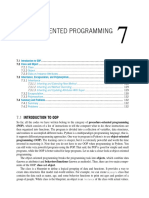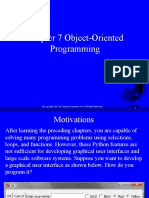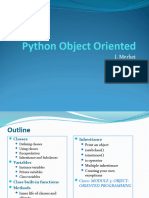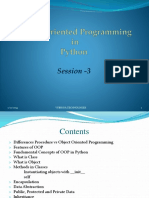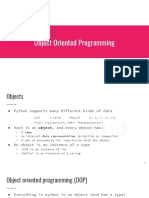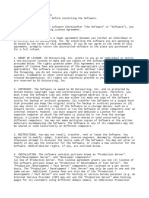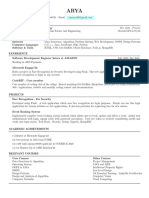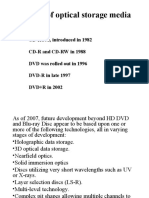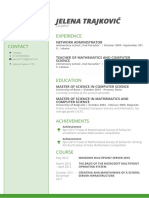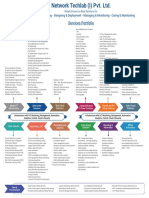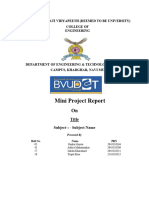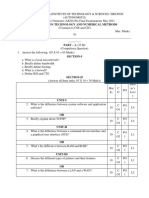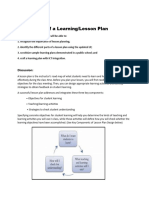0% found this document useful (0 votes)
6 views36 pagesch10. Part1 2025
Chapter 10 introduces object-oriented programming (OOP) in Python, explaining the concepts of classes, objects, encapsulation, inheritance, and polymorphism. It emphasizes how real-world objects can be represented as software objects with states and behaviors, and how classes serve as blueprints for creating these objects. The chapter also discusses the importance of data abstraction and information hiding in maintaining and improving software design.
Uploaded by
김우석Copyright
© © All Rights Reserved
We take content rights seriously. If you suspect this is your content, claim it here.
Available Formats
Download as PDF, TXT or read online on Scribd
0% found this document useful (0 votes)
6 views36 pagesch10. Part1 2025
Chapter 10 introduces object-oriented programming (OOP) in Python, explaining the concepts of classes, objects, encapsulation, inheritance, and polymorphism. It emphasizes how real-world objects can be represented as software objects with states and behaviors, and how classes serve as blueprints for creating these objects. The chapter also discusses the importance of data abstraction and information hiding in maintaining and improving software design.
Uploaded by
김우석Copyright
© © All Rights Reserved
We take content rights seriously. If you suspect this is your content, claim it here.
Available Formats
Download as PDF, TXT or read online on Scribd
/ 36



